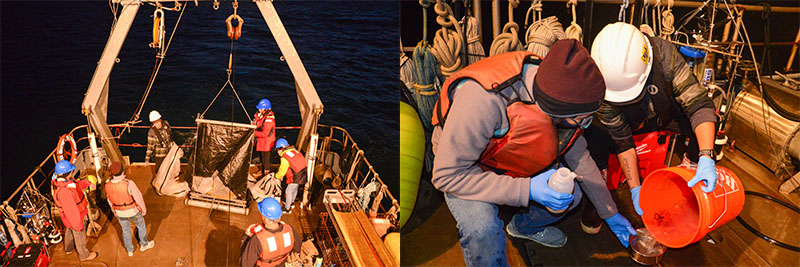

(Left) The team prepares the zooplankton tow net at dusk. Each night, zooplankton migrate to the water’s surface to feed on phytoplankton, making dusk the perfect time to use nets to collect samples. This is often referred to as “the greatest migration on Earth” as it happens in all ocean basins around the world. (Right) The zooplankton from the nets are collected in jars to be analyzed later under microscopes.